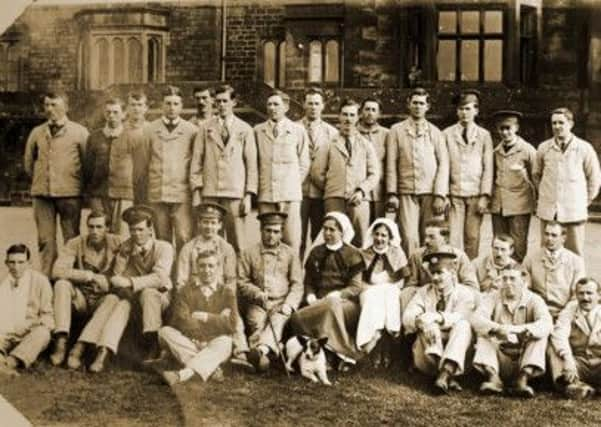Museum hosts plenty of WW1 exhibitions


Longshaw Lodge was used as a convalescent hospital for wounded soldiers during the conflict and the discovery of Alice Clifford’s photo album has revealed even more infomation about the time.
Catherine MacCarthy, Head of Conservation at the National Trust in the Midlands, said: “The impact of the First World War on country houses was far reaching.
Advertisement
Hide AdAdvertisement
Hide Ad“Many great houses and estates in our care were affected in some way by the war, as were the families and servants who lived and worked in them.
“This summer we are commemorating the lives of those who were there on the battlefield and on the home front and sharing their stories.”
For soldiers out of the trenches who were seriously injured, the beautiful moorland scenery around Longshaw must have helped both their physical and mental recovery.
A collection of photographs show them boating on the pond and enjoying tea parties.
Advertisement
Hide AdAdvertisement
Hide AdThe lodge was an auxiliary hospital to the 3rd General Hospital in Sheffield.
The First World War heralded the end of traditional country house life, according to the trust.
Servants and family members were called to fight with many tragic deaths.
The loss of aristocratic heirs and the crippling impact of death duties led to many families selling their estates.
Advertisement
Hide AdAdvertisement
Hide AdThe 7th Lord Vernon’s elder son and heir to Sudbury Hall, at nearby Asbourne, George, died in 1916.
Aged only 28, he died while on active service in Gallipoli.
The war also brought about a significant social change in the shape of a servant crisis.
Many people previously employed in domestic service finding that they could get paid more working in factories.
A National Trust spokesman added: “By the end of the war in 1918, country houses were no longer the epicentre of local power that they had been and the landowners were losing their prestige.
Advertisement
Hide AdAdvertisement
Hide Ad“So began an era of country houses being demolished and estates changing hands and in many cases being split up.”
Places like the Longshaw Estate in Derbyshire, Gunby Hall and Gardens in Lincolnshire and Canons Ashby in Northamptonshire will be uncovering the stories from the Home Front, enabling people to discover more about life in the First World War.